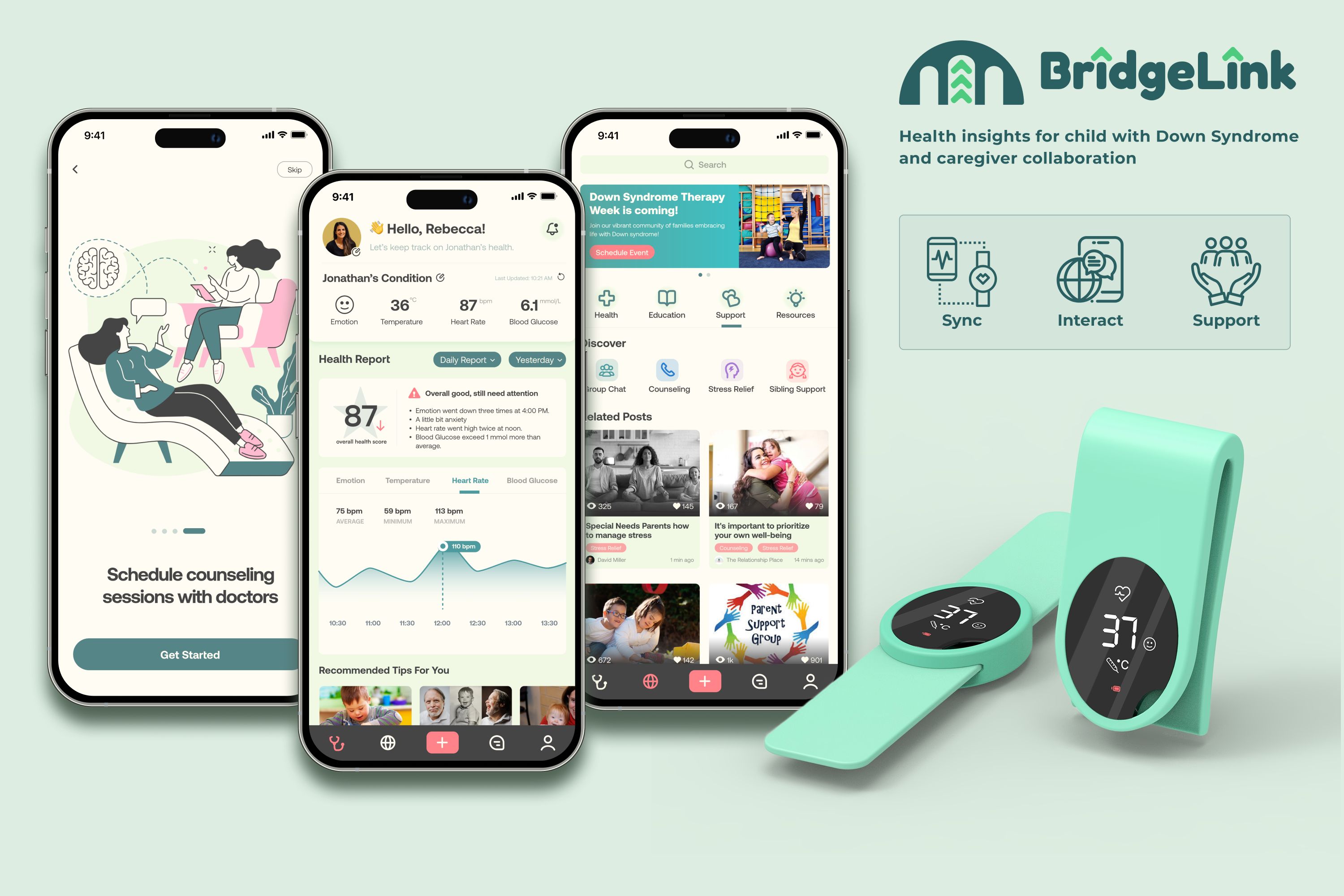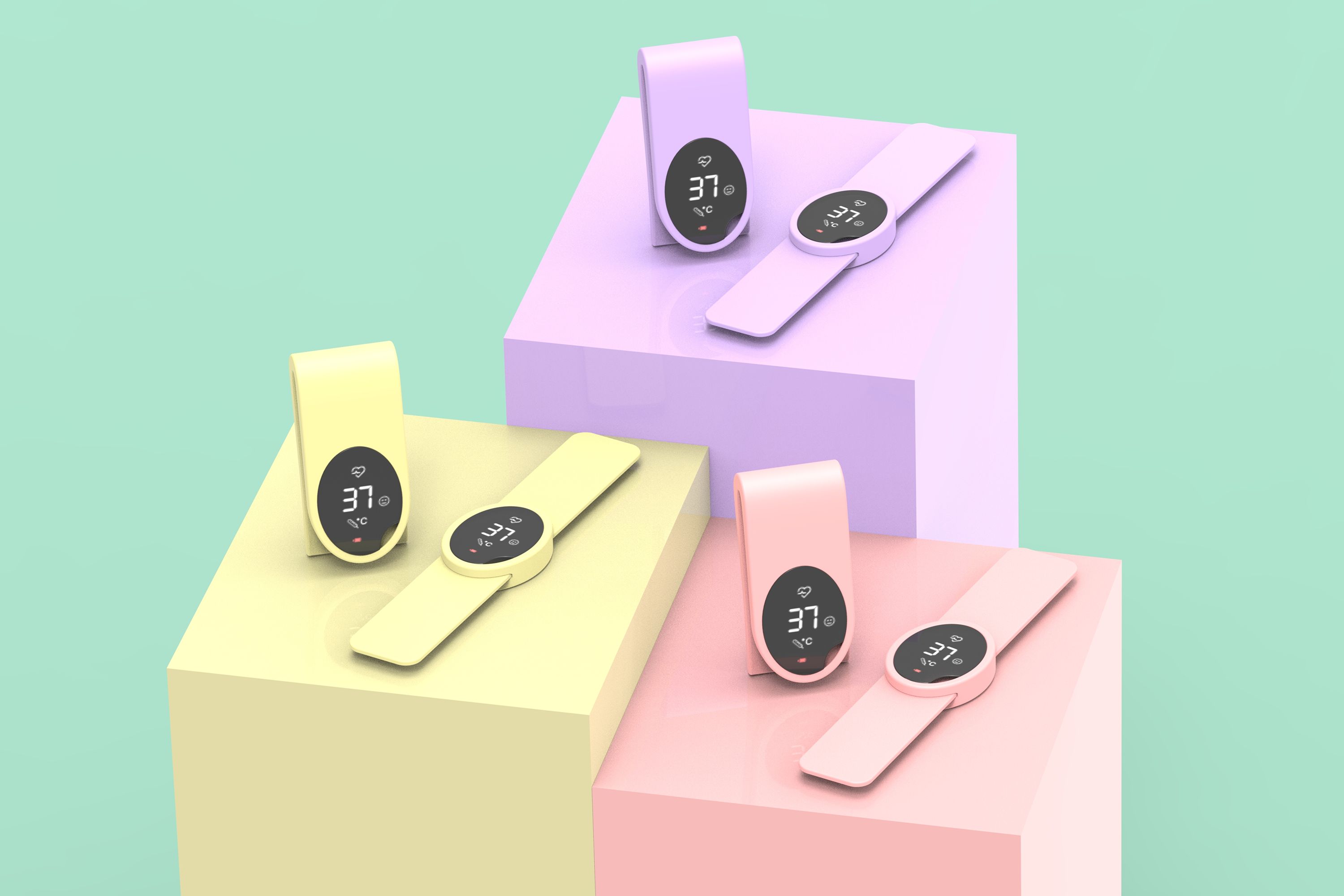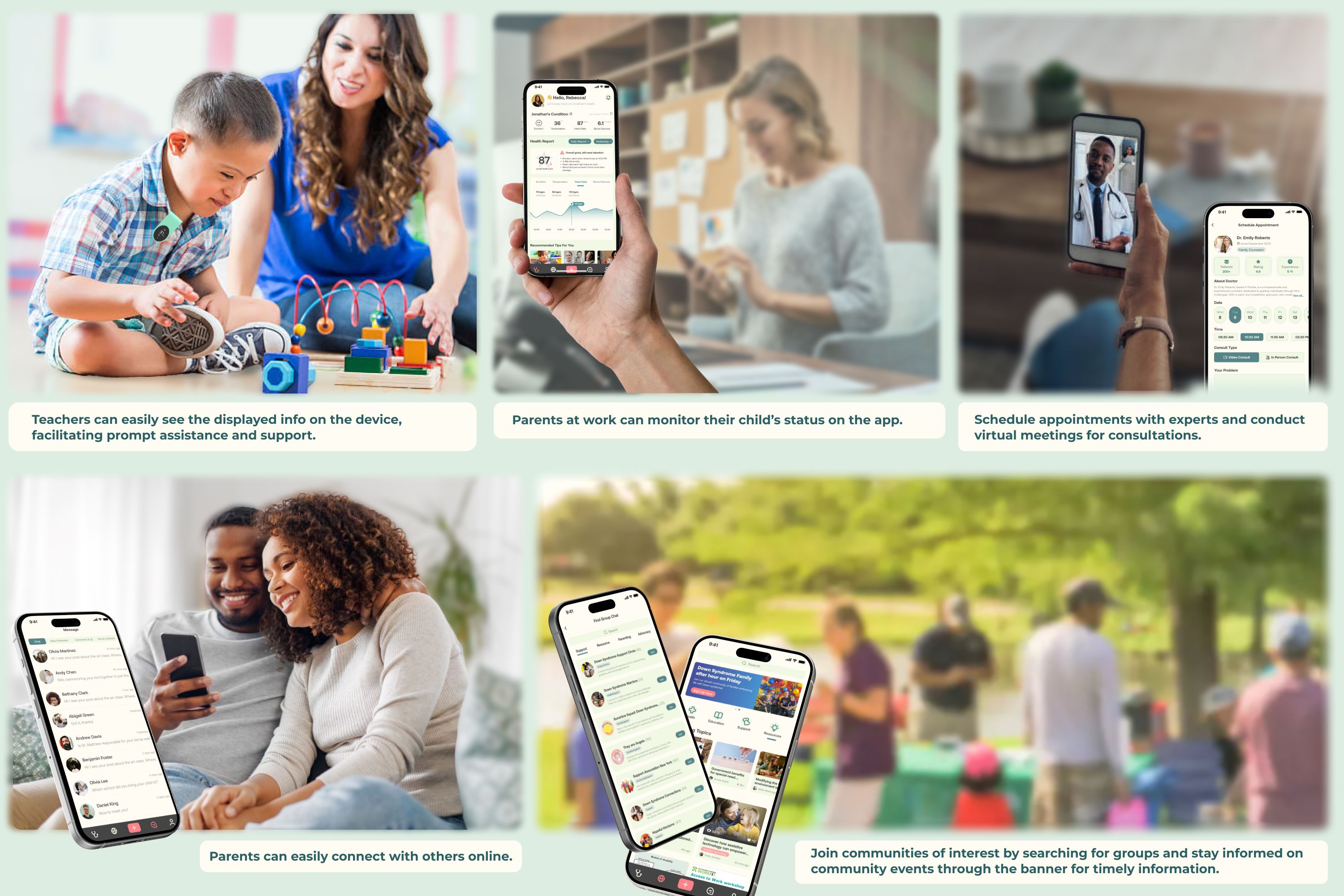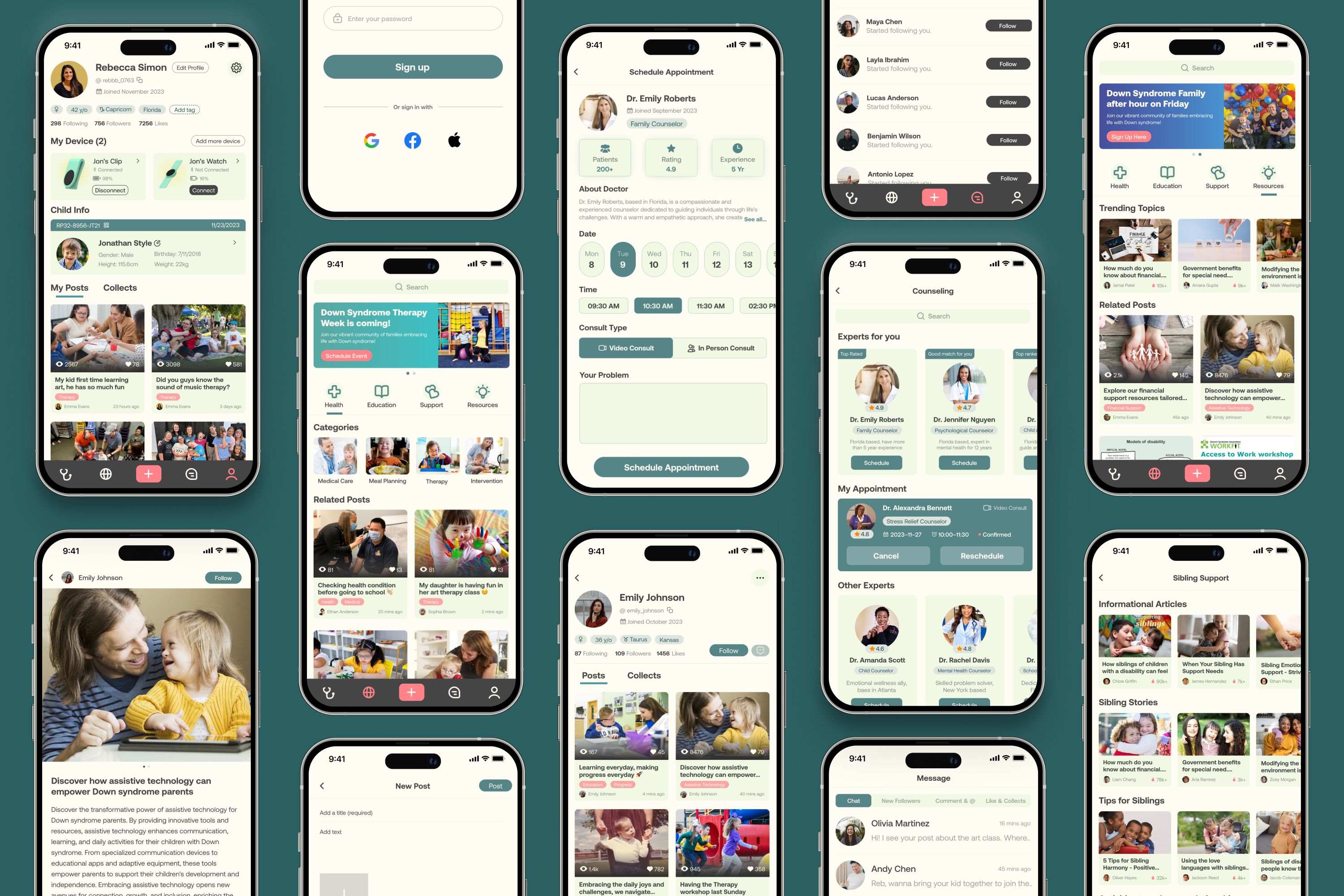
Designers
Xinchen Yu
Year
2025
Category
New Talent
Country
United States
School
Maryland Institute College of Art

Three questions to the project team
What was the particular challenge of the project from a UX point of view?
The key UX challenge in the BridgeLink project was designing a product that allowed parents to monitor the health data of children with Down syndrome in real time, while also ensuring the device was easy for the children to wear independently. Through my research, I found that many children with Down syndrome have limited finger dexterity—making precise operations difficult. To address this, I designed two wearable options: one that clips onto clothing and the other with a slap-band style wristband. This made the device easy to put on without limited mobility. Parents can track data via a screen or remotely on their phones, reducing their anxiety while empowering the children to use the device on their own.
What was your personal highlight in the development process? Was there an aha!-moment, was there a low point?
My “aha!” moment came during a usability test with parents of children with Down syndrome. One parent shared that their child was extremely active—constantly running, jumping, and engaging in physical play. This raised an important concern: a device clipped to clothing might easily fall off or hinder movement. Inspired by the Apple Watch, I redesigned the device with a detachable screen and a small notch, allowing children to easily attach it to a slap-band wrist strap by themselves. This made the device both secure during movement and easy to use independently—a key breakthrough that improved both safety and usability.
Where do you see yourself and the project in the next five years?
In the next five years, I hope this project can be truly implemented in homes and schools, improving the daily lives of families with children who have Down syndrome and easing parents’ anxiety. I also aim to integrate more AI features into the device to enable personalized health monitoring and early intervention. As for myself, I aspire to become a UX designer focused on wearable and assistive technologies, working to advance accessibility and create inclusive design solutions that genuinely improve people’s lives.


